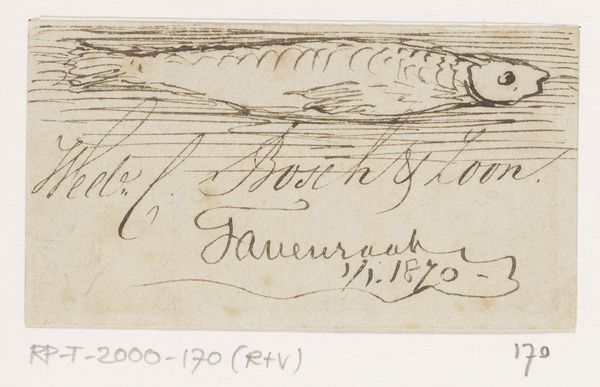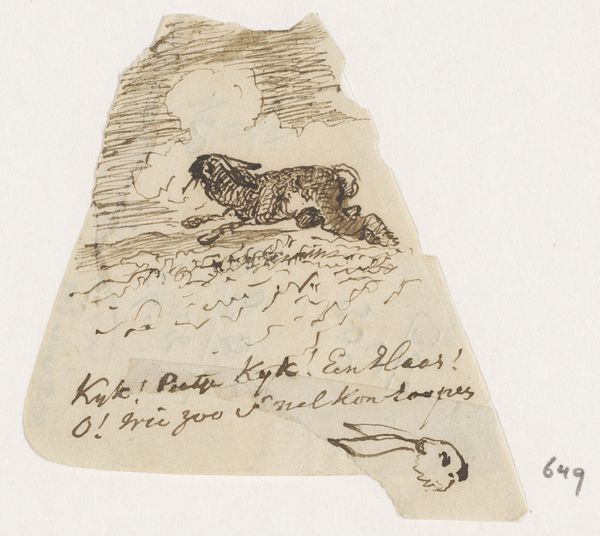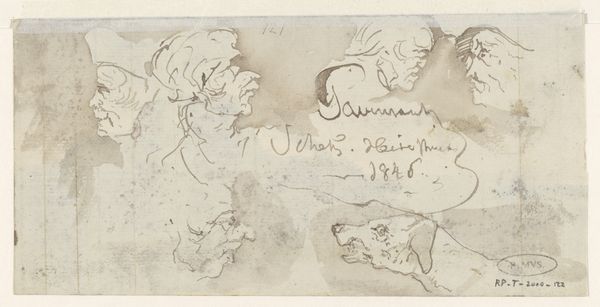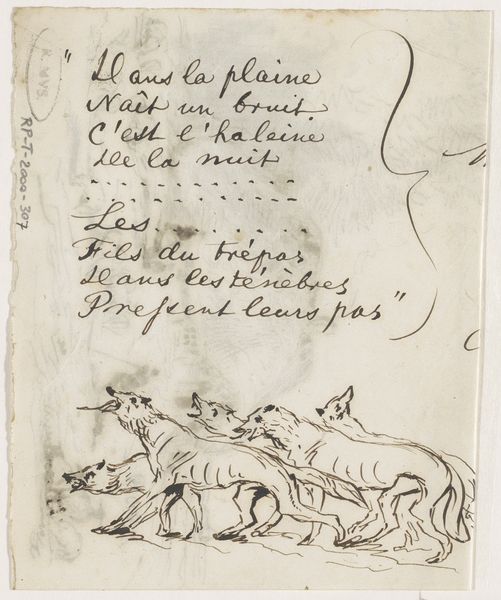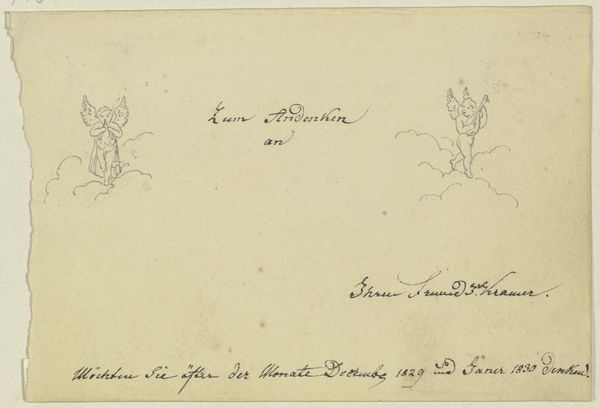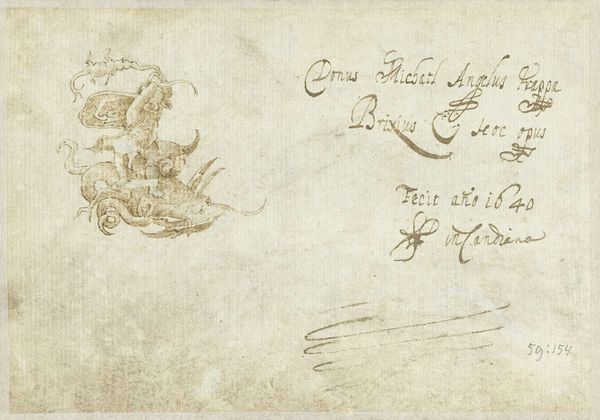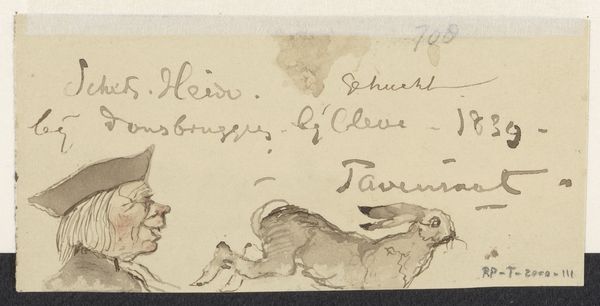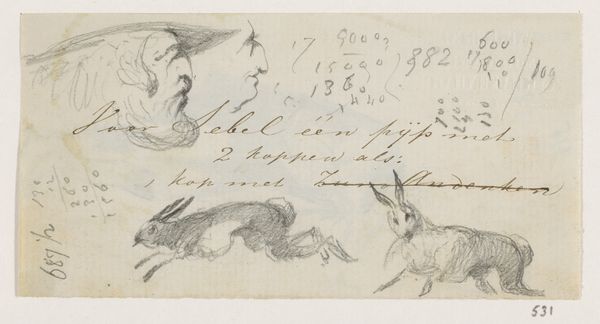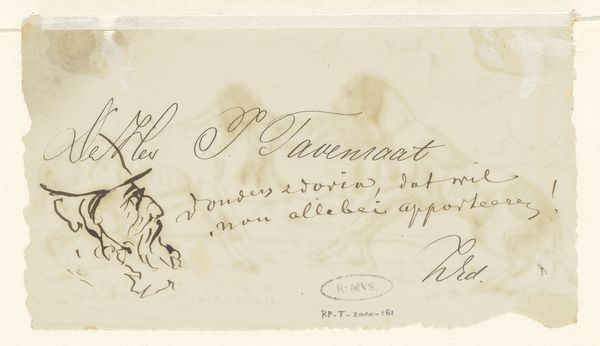
drawing, paper, ink
#
portrait
#
drawing
#
paper
#
ink
#
genre-painting
#
realism
Dimensions: height 65 mm, width 134 mm
Copyright: Rijks Museum: Open Domain
Curator: This drawing, titled "Koppen van eenden" or "Heads of Ducks," was created between 1840 and 1880, using ink on paper, by Johannes Tavenraat. It now resides here at the Rijksmuseum. Editor: My first impression is that it feels quite casual and almost scientific in its presentation. The variations in depiction create an effect that seems simultaneously serene and clinical. Curator: Precisely. Consider how ducks in art are associated with adaptability, resourcefulness, and the ebb and flow of life’s currents. Tavenraat offers us almost a deconstructed emblem here, fragmenting these themes for closer observation. What sociopolitical commentary do you see at play in the naturalism on display? Editor: It’s fascinating how a simple animal study like this can trigger thoughts about class and privilege! Duck hunting as a sport of the elite certainly springs to mind. Perhaps the artist subtly comments on such hierarchies within society. Are the ducks representative of anything deeper here? Curator: Potentially! Let us also consider the history and iconography. The duck symbolizes transition, especially from water to air to land. Each pose may signify distinct stages or challenges inherent in this transitional experience, culturally or even psychologically. These varying portraits highlight the different perspectives from which we may know an animal or even view nature itself. Editor: Absolutely, but I am interested in its accessibility! Even with layers of symbolism and the established trope, it's still very raw and quite direct. Tavenraat gives an honesty, removing that gilded veneer one might expect and focusing, instead, on simple and truthful representation. It also democratizes high art for viewers outside that social bubble! Curator: You bring a unique approach with these layers, showing how something simple also engages in wider dialogues on access. By rendering ducks so directly, perhaps Tavenraat aimed to ground his viewers, providing accessible emblems. Thank you for allowing your perspectives to shape this reading! Editor: A wonderful addition to my day as well, thanks! Examining these natural renderings in that lens really brings the subject to our level!
Comments
No comments
Be the first to comment and join the conversation on the ultimate creative platform.
